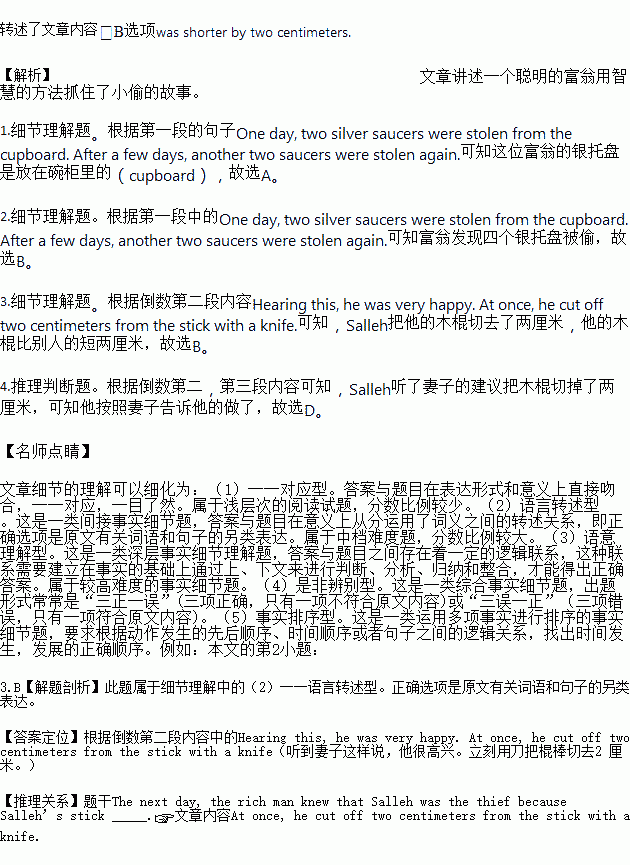题目内容
Long ago, there was a rich man, who had a very big house with a lot of treasures and many servants. One day, two silver saucers were stolen from the cupboard. After a few days, another two saucers were stolen again. The rich man was very angry. He thought, “Someone must have stolen them. I must catch the thief, or another two saucers would be stolen in a few days.”
Then he had an idea. He called in all his servants and said. “Some of my silver saucers have disappeared. Someone among you must have taken them. Who has taken them?”
The servants looked at one another and kept quiet. Then the rich man said, “I shall catch the thief myself. I am giving each of you a stick. Look, all the sticks are of the same length, Keep the sticks. Bring them back tomorrow. The thief’s stick will two centimeters longer.”
That evening, Salleh, one of the servants, went home sadly. His wife asked him, “Why are you so sad this evening?”
“This stick will grow two centimeters longer tomorrow because I have taken the silver saucers,” he said.
“Oh, don’t worry. Cut off two centimeters from the stick,” his wife said. “In other words your stick will be of the same length as any of the other sticks.”
Hearing this, he was very happy. At once, he cut off two centimeters from the stick with a knife.
The next day, each of the servants brought back his stick. The rich man then measured each of the sticks. He found Salleh’s stick shorter by two centimeters. Salleh was the thief. He was caught and put in prison. The rich man got back the stolen saucers.
1.The silver saucers were kept in____
A. a cupboard B. a box
C. the kitchen D. the bedroom
2.The rich man found _____ silver saucers were stolen
A. two B. four
C. six D. three
3.The next day, the rich man knew that Salleh was the thief because Salleh’s stick _____.
A. remained the same length
B. was shorter by two centimeters
C. was longer by two centimeters
D. broke in two
4.Which of the following is TRUE?
A. Salleh’s wife told him to return the stolen saucers
B. Salleh’s wife was angry with him
C. Salleh brought back the stolen saucer himself
D. Salleh did as his wife told him to.

